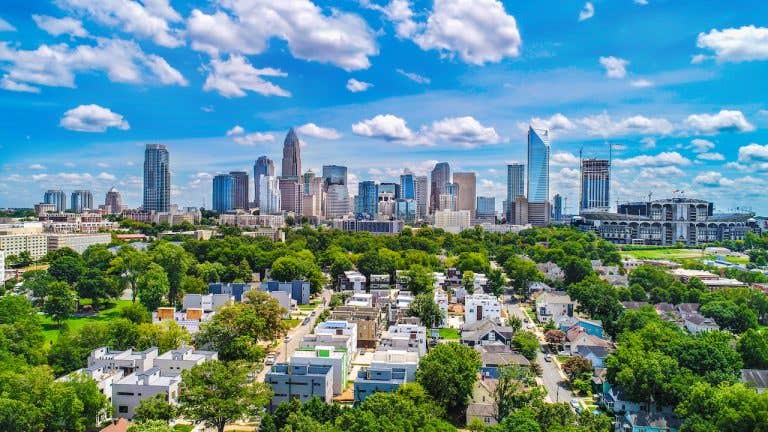Open-source software helps cities more effectively plant trees in pursuit of clean air
Software to help towns and cities use street-planting to reduce citizens’ exposure to air pollution has been developed by researchers

[July 7, 2021: University of Birmingham]
Software to help towns and cities use street-planting to reduce citizens' exposure to air pollution has been developed by researchers at the University of Birmingham.
Street planting, or 'green infrastructure', is an essential part of the urban realm, but there is a misconception that plants remove or 'soak up' a lot of pollution. Instead, planting at this scale primarily serves to redistribute pollution by changing air currents within streets and beside open roads.
Because of this, not only the position and amount of planting within a street, but also the layout and orientation of that street, are critical to its impacts on local air quality.
The software - the Green Infrastructure for Roadside Air Quality or 'GI4RAQ' Platform - has been designed by experts in the University of Birmingham's Institute of Forest Research (BIFoR) and School of Geography, Earth and Environmental Sciences, in partnership with practitioner organisations, including: Transport for London, Greater London Authority and Birmingham City Council. It is the result of three years' collaboration, funded principally through three Innovation grants from the Natural Environment Research Council.
Free to use and open-source, the software enables practitioners to estimate the changes in pollutant concentrations (throughout the cross-section of a street) resulting from different planting schemes. It focusses on key pollutants from road transport: NO2 (nitrogen dioxide) and PM2.5 (fine particulate matter). Its calculations draw on wind data from monitoring stations across the UK, and determine how background wind conditions interact with the local urban form and planting specified by the user.
The software's performance and underlying science are documented in a paper published last month in the open-access journal, Forests.
Lead researcher, Dr James Levine says: "In reducing our exposure to pollution from nearby vehicles, strategic planting can complement essential emission reductions in reducing health impacts. But it's not as simple as thinking that any planting will do good - if indiscriminate, it's just as likely to have a negative impact. There are many good reasons to invest in green infrastructure but, if planting in the name of improving air quality, we must ensure it delivers genuine benefits. By estimating the benefits at planning, we can ensure good schemes are robust to cost-cutting and fully realised."
Informed by their work with Dr Levine, Transport for London is currently exploring a potential 'healthy and resilient streets' scheme with the Greater London Authority. Dr Levine is also in discussion with The Mersey Forest and Liverpool City Council regarding a scheme in central Liverpool.
Paul Nolan OBE, Director of the Mersey Forest, commented: "The GI4RAQ Platform bridges the gap between academic researchers and organisations like The Mersey Forest, cutting through the often-mixed messages regarding the impacts of vegetation on urban air quality, in support of projects delivering genuine, lasting benefits."
The GI4RAQ team is led by Dr Levine and includes: doctoral student Ms Helen Pearce, who wrote the open-source air quality code (https://github.com/GI4RAQ/GI4RAQ-open); Prof Rob MacKenzie (Director of BIFoR) and Dr Xiaoming Cai; Tommy Morrison, Chris Thompson and Matt Sadler of Wild Ilk Design Studio, who developed the web interface; all with funding from the Natural Environment Research Council through grants, NE/S00940X/1, NE/S013814/1, NE/S00582X/1 and NE/S003487/1, and studentship grant, NE/R011265/1.
Like these kind of feel good stories? Get the Brighter Side of News' newsletter.
Tags: #Green_News, #Trees, #Urban_Planning, #The_Brighter_Side_of_News



